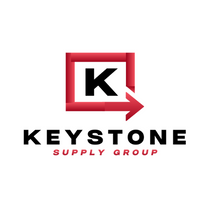Keeping your facility clean and compliant isn’t as simple as grabbing a disinfectant off the shelf. The right product, and the right format, can save significant time, reduce waste, and ensure true pathogen kill across critical surfaces. In 2025, with more emphasis on infection prevention and environmental hygiene, procurement teams are under pressure to balance cost, performance, and compliance like never before.
The debate between disinfectant wipes and sprays continues in healthcare, education, food service, and janitorial settings. Both can be effective, but each has strengths and limitations depending on your workflow and environment. Here’s how to make the right choice for your facility.
Start with EPA Registration
The first and most important step is confirming that your product is EPA-registered and, if used against viruses like SARS-CoV-2, listed on EPA’s List N. This list identifies products proven to kill the virus that causes COVID-19 and other hard-to-kill pathogens when used according to label instructions.
EPA registration isn’t just a marketing claim, it’s a guarantee that the disinfectant has been independently tested for efficacy, safety, and surface compatibility.
When comparing options, review:
EPA Registration Number: Should appear clearly on the label.
Contact Time (Dwell Time): The time the surface must remain visibly wet to achieve full disinfection, often between 1–10 minutes.
Surface Compatibility: Some chemicals can degrade plastics, rubbers, or stainless steel if overused.
Pro Tip: Faster isn’t always better. A product with a one-minute contact time that dries too quickly may underperform compared to a wipe that stays wet for three minutes and maintains full coverage.
Wipes vs. Sprays: Which One Fits Your Facility?
Both formats can meet EPA efficacy standards, but their real-world performance depends on how (and where) they’re used.
Disinfectant Wipes
Wipes are ideal for high-touch surfaces like doorknobs, counters, medical carts, and patient-care equipment. They deliver a consistent amount of disinfectant with every use and eliminate the need for separate cloths or buckets. Wipes are also convenient for quick-turn cleaning where time and consistency matter most.
Advantages:
Fast, one-step application, ready to use.
Uniform coverage and controlled saturation.
Minimal cross-contamination risk (one wipe per use).
Easy to store and transport.
Limitations:
Higher cost per use than sprays.
Limited surface area coverage per wipe.
Can dry out if containers are left open.
Disinfectant Sprays
Sprays are better suited for large surface areas like walls, floors, and equipment exteriors. They’re highly economical when paired with reusable microfiber cloths and work well in facilities with structured cleaning SOPs. However, improper technique can lead to uneven coverage or insufficient dwell time.
Advantages:
Lower cost per square foot.
Better coverage for broad areas.
Adjustable nozzle and dilution options for flexibility.
Limitations:
Requires training to ensure full contact coverage.
Higher potential for overspray and chemical waste.
Some formulas may cause residue buildup on sensitive surfaces.
When to Use Which:
Use wipes for high-touch, small-surface cleaning (keyboards, door handles, patient areas) and sprays for large or less-frequent disinfection tasks (floors, walls, equipment rooms).
Implementation Tips for Consistency and Compliance
Even the best product won’t perform if it’s used incorrectly. To ensure effective cleaning across your organization:
Train Staff Thoroughly – Cleaning and disinfection are not the same. Employees should first remove visible soil before applying disinfectant. Training should also cover contact times and safe disposal.
Standardize Dwell Times and Products – Stick with one or two EPA-registered brands per facility. This makes training easier and minimizes confusion about contact times.
Document and Track Usage – Monitor how much product is used per area. Over- or under-use can both drive up costs and reduce efficacy.
Evaluate Supply Chain Stability – Choose distributors who can deliver consistent inventory. Backorders can force brand changes that confuse staff and disrupt compliance documentation.
How Keystone Supply Group Helps
At Keystone Supply Group (KSG), we specialize in simplifying facility supply chains through reliable sourcing, transparent pricing, and personalized support. Our team cross-references your current disinfectants with in-stock, EPA-listed alternatives to ensure you always have compliant products ready to ship.
Whether you prefer wipes, sprays, or bulk concentrates, KSG offers:
Verified EPA-List N disinfectants for healthcare and commercial facilities.
Bulk pallet pricing to reduce cost per unit.
Brand equivalency matching to simplify substitutions.
Reliable, nationwide delivery and inventory management.
Our mission is simple: help you maintain cleaner, safer environments while lowering procurement complexity.
Request a Free Product Crosswalk
If your facility is juggling multiple disinfectant brands or struggling with supply consistency, our team can help. We’ll review your current SKUs, identify EPA-approved equivalents, and send you a customized analysis showing cost and lead-time savings.
Request a Free Cost Analysis Today: Kevin@keystonesupplygroup.com





